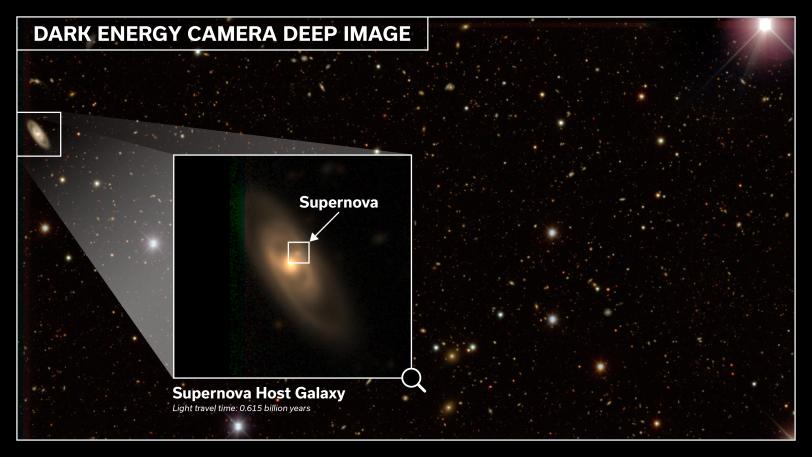
In the culmination of a decade's worth of effort, the DES collaboration of scientists analyzed an unprecedented sample of nearly 1,500 supernovae classified using machine learning. They placed the strongest constraints on the expansion of the universe ever obtained with the DES supernova survey. While consistent with the current standard cosmological model, the results do not rule out a more complex theory that the density of dark energy in the universe could have varied over time.
In 1998, astrophysicists discovered that the universe is expanding at an accelerating rate, attributed to a mysterious entity called dark energy that makes up about 70% of our universe. While foreshadowed by earlier measurements, the discovery was somewhat of a surprise; at the time, astrophysicists agreed that the universe's expansion should be slowing down because of gravity.
This revolutionary discovery, which astrophysicists achieved with observations of specific kinds of exploding stars, called type Ia (read "type one-A") supernovae, was recognized with the Nobel Prize in Physics in 2011.
Now, 25 years after the initial discovery, the scientists working on the Dark Energy Survey have released the results of an analysis using the same technique to further probe the mysteries of dark energy and the expansion of the universe. In a presentation at the 243rd meeting of the American Astronomical Society on Jan. 8 and in a paper submitted to the Astrophysical Journal in January titled, "The Dark Energy Survey: Cosmology results with ~1500 new high-redshift type Ia supernovae using the full 5-year dataset," DES astrophysicists report results that are consistent with the now-standard cosmological model of a universe with an accelerated expansion. Yet, the findings are not definitive enough to rule out a possibly more complex model.
"I've been working on the Dark Energy Survey since the first proposal 20 years ago, so it's very exciting to see these results finally come to fruition, and using techniques that we hadn't even thought of at the start," said Risa Wechsler, the Humanities and Sciences Professor and professor of physics and of particle physics and astrophysics and director of the Kavli Institute for Particle Astrophysics and Cosmology at SLAC and Stanford. "The techniques pioneered by the DES Supernovae team really push the field forward and it will be fantastic to see what we are able to do when our number of supernovae increases. Rubin Observatory's LSST will do this quickly, as soon as it starts, so that supernovae techniques like these will soon be even more powerful."






